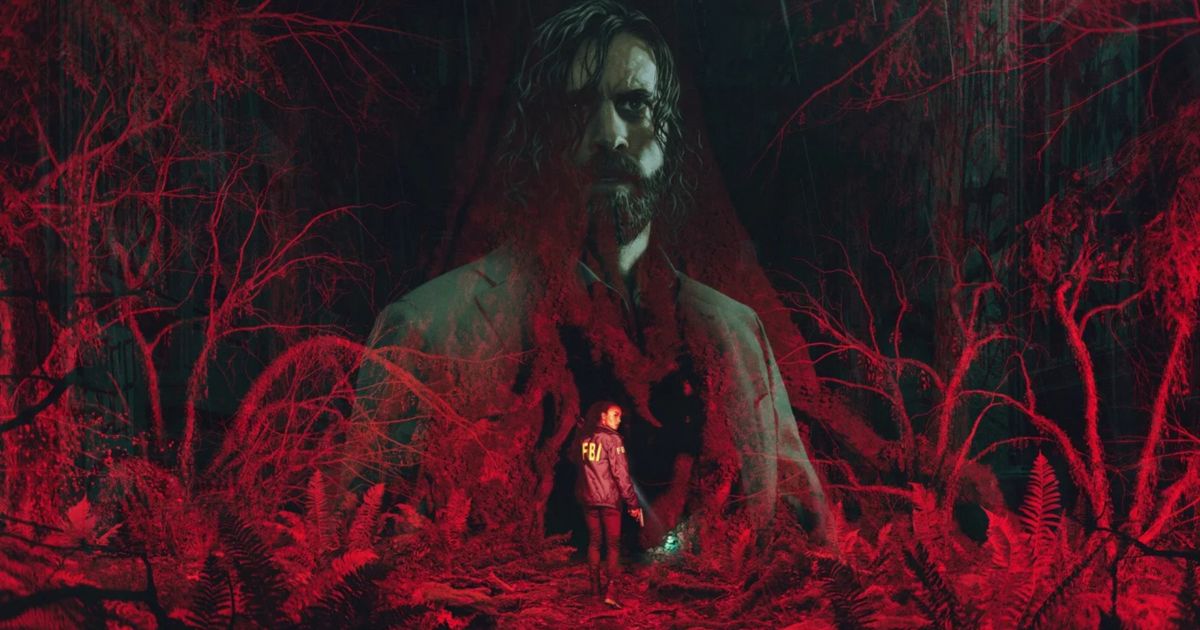In a market saturated by high-pace, high-action titles that require slick skills in combat and quick controller reactions, Alan Wake 2 surfaces after a 13-year slumber with great success. With a thrilling narrative that’ll have fans at the edge of their seats and immersed in a dual-dimension mystery, Remedy Entertainment has rewarded the patience of its fanbase.
Thankfully for those who didn’t get around to the original 2010 title, you can still pick up the story without any significant issues. Alan is still trapped in the Dark Place as per the end of the previous game, but it could just as easily be the premise of a stand-alone story. If you’ve played the original, you’ll find it far easier to follow, of course, but as someone who didn’t get a chance to experience the first one, I was immediately drawn into the narrative from the start.
The sequel to the Stephen King-inspired horror title introduces a whole new character, FBI detective Saga Anderson, who executes her end of the gripping tale with surgical precision to coincide with Alan’s struggle for freedom. The narrative is cleverly crafted to put the power in the hands of the player, allowing you to determine which of the protagonists takes over the next chapter.
Players get what they hoped for when it comes to providing some intellectually challenging riddles to solve. The game is peppered with haunting nursery rhyme puzzles and there are a multitude of cleverly crafted puzzles that you’ll need to solve to progress the story or pick up useful items like weapons and charms. Few moments in the game were more satisfying than solving a riddle and reaping the rewards.
One criticism I have for Alan Wake 2 isn’t really a criticism at all, but at times it felt far from a video game. For all intents and purposes, Remedy Entertainment presents to you an interactive movie that has you taking the mantle of a detective (and writer) like in any of your favourite cop shows to solve the mystery of the manuscript and the Dark Place. While this might not appeal to everyone, the playable film feel to it, reminiscent of Heavy Rain, was executed with such care and detail that it surfaced a unique thrill of feeling like you’re playing a part in the outcome of a Hollywood blockbuster.
Another particularly sharp element that Remedy Entertainment nailed to make me think I was in a movie more than a game was the incredibly high-quality graphics. Sure, there was a distinct difference between the real-life scenes enacted by Ilkka Villi (Alan Wake) and the in-game footage but even in the midst of gameplay you would not be alone in believing you’re purely a passenger in this story instead of the driver. In particular, the close-up shots of the main characters were so delicately put together that you’d have to double-take if you were passing by footage of the game.
The gameplay in Alan Wake may be a little underwhelming for the mainstream gamer but it is exactly what was needed for a project of this genre and calibre. Moreso than other big AAA titles on the market, the emphasis was placed on the quality of storytelling more than anything. The controls were easy to get a grasp on and didn’t take away from the overall experience as a whole. Remedy Entertainment kept things simple, which worked wonders.
With that being said, the gamer in me struggled at times with the pace of Alan Wake 2. Not in the cinematics and the dramatic presentation of the story, but in the general gameplay. Movement felt quite slow and laboured and the running mechanics felt quite ineffective in that there wasn’t an overly noticeable difference from walking pace. It didn’t help that some of the exploratory components of the game’s maps were quite big, meaning solving those interesting riddles and grabbing the collectables began to feel a bit more like a chore at the end. The slower pace understandably would largely be implemented with the purpose of building suspense and having you on the lookout for the next terror around the corner, but a little speed-up would’ve made a big difference.
The other components that could’ve benefited from some tweaks were Saga’s Case Board and Profiling. While it was great to be able to find the evidence and build your case, it was almost impossible to make a mistake. Anytime you placed a piece of evidence on the board in the wrong space, Saga would click her tongue and remove it.
In a similar fashion, Profiling characters gave far too much away. You were sent on Saga’s mental journey through the facts which resulted in her reaching conclusions you rarely could’ve done yourself with the evidence provided. I was still taken on an emotional journey as the story unfolded, but it would’ve taken the game to a whole new level if I had to reach these conclusions as the player.
Tweaks and small adjustments aside, Alan Wake is an exhilarating, suspenseful and, at times, frightening title that ticks all the boxes and even goes beyond what many would have expected. While it won’t slap you in the face with endless waves of horror, it provides original storytelling, thrilling twists and turns, and casting that fits like a glove in one carefully, lovingly crafted package.
Remedy Entertainment has lived up to fan expectations in Alan Wake 2. They’ve raised the bar even further in their storytelling and ability to evoke emotions in players that will linger long after they’ve put the title down. Fans will well and truly revel in the next chapter of this incredible story, provided they’ve got enough battery in their flashlight.

Alan Wake was reviewed on PlayStation 5 with a code provided by the developer.
Explore new topics and discover content that's right for you!






